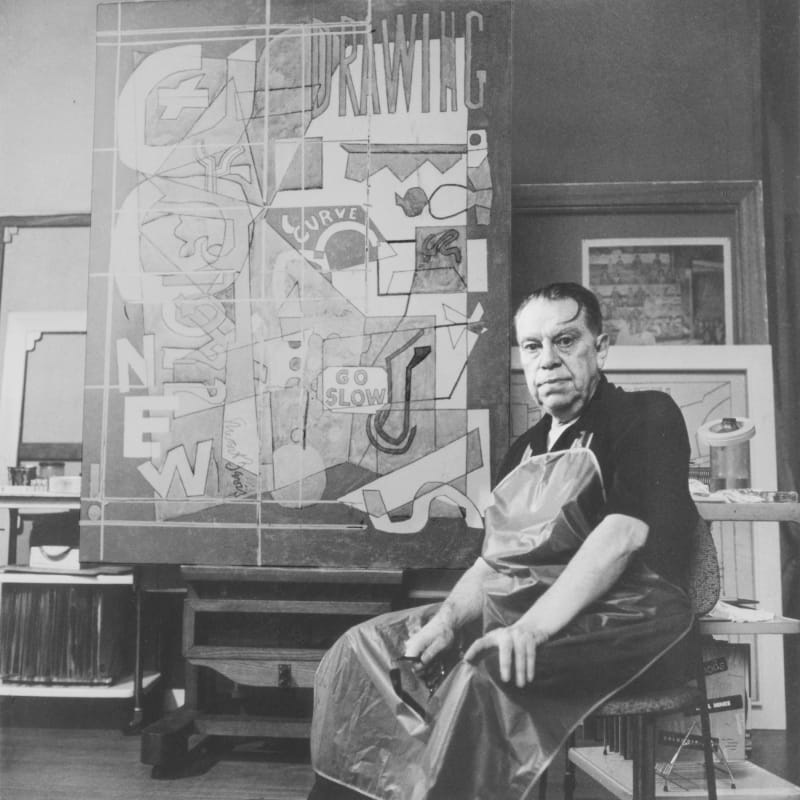Stuart Davis US, 1892-1964
"I paint what I see in America, in other words I paint the American scene."
- Stuart Davis
One of America’s leaders of abstract art, Stuart Davis was born in Philadelphia, Pennsylvania in 1892. His mother was a sculptor and his father was an art editor of the Philadelphia Press, working with George Luks, William Glackens, Robert Henri, and other members of the Eight. Inspired by the artistic environment at home, Davis left high school in 1909 to attend the Robert Henri School of Art in New York until 1912. Robert Henri was a liberal teacher, encouraging students to be spontaneous in their art. Davis responded to this progressive approach, which permitted him to absorb the new styles that were emerging at the time. Spontaneity in art extended to life, and Davis and his fellow students became fans of jazz, resulting in Davis’s lifelong sensitivity to both musical and visual rhythms.
Between 1912 and 1916, while supporting himself as an illustrator for several magazines, he began experimenting with cubist abstraction. Davis introduced a new style of cubism in the United States, basing his compositions on combinations of flattened forms, often abstracted from the urban scene. Drawing on familiar structures and objects, he would reduce them to flat, sharp-edged shapes arranged in broad, colorful patterns and active lines that punctuate the composition.
Davis exhibited five watercolors at the 1913 Armory Show, unusual recognition for a young artist, and in 1917 he had his first one-person exhibition in New York. His first solo museum exhibition was held in 1925 at the Newark Museum. The following year he was included in the “International Exhibition of Modern Art” arranged by the Société Anonyme for The Brooklyn Museum.
In 1927 Davis’s abstract style reached its culmination in his Egg Beater series. Davis wrote to Duncan Phillips, who had purchased Egg Beater No. 4 (1928): “The ‘Egg Beater’ represents the best example of this series which enabled me to realize certain structural principals [sic] that I have continued to use ever since.” At the same time, Edith Halpert, a proponent of modern art and owner of the Downtown Gallery, became his dealer.
From 1928 to 1929 Davis lived in Paris, where he created many paintings and lithographs of cafés and street scenes. Upon his return to America in 1929, he moved to Greenwich Village and spent most of his summers in Gloucester, Massachusetts. From 1931 to 1932, Davis taught at New York’s Art Students League. He was a muralist for the Public Works Art Project from 1933 to 1939. Though Davis had an active and successful career as an artist, he continued his teaching, notably at New York’s New School for Social Research (1940-50) and at Yale University (1951).
Today, the artist’s works are included in the collections of the Art Institute of Chicago, the National Gallery of Art in Washington, D.C., and the Whitney Museum of American Art in New York, among others.

